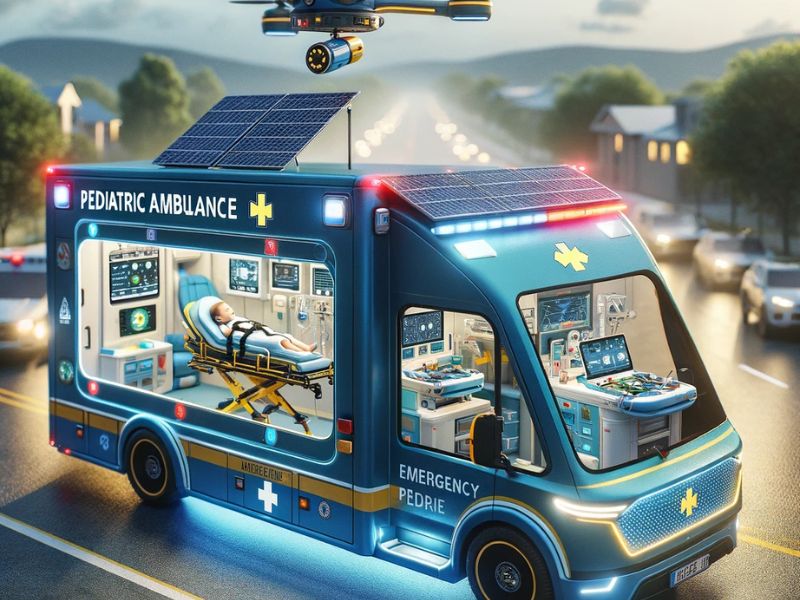
Pediatric Ambulances: Innovation in the Service of the Youngest
Innovation and specialization in pediatric emergency care
Pediatric ambulances are state-of-the-art vehicles specifically designed for children’s medical crises. They are equipped with special gear to assist young patients during transportation. These ambulances utilize cutting-edge technologies such as drones for swiftly delivering supplies and solar panels for eco-friendliness. They are not just ordinary ambulances but mobile clinics built with consideration for the emotional needs of children, making a stressful trip to the hospital much simpler.
High standards and specialized training
Pediatric ambulances in Europe adhere to very strict regulations regarding vehicle technology and medical equipment. Requirements ensure that each ambulance is capable of handling every type of pediatric emergency, from mild to severe. Additionally, personnel training is crucial: doctors, nurses, and paramedics study pediatric medicine and how to handle challenging situations involving stressed children and families. This comprehensive approach means that high-level treatment begins in the ambulance, increasing the chances of complete recovery for the child.
Children require extra care when they are sick or injured. In the future, pediatric ambulances will be more modern and equipped with better technologies to assist them swiftly.
Towards the future: technology and sustainability
Pediatric ambulances are undergoing radical upgrades. Soon, they will sync with emergency teams to share information in real-time. Radical gadgets will make diagnosing and treating children a breeze on the go. Furthermore, these vehicles will be eco-friendly, emitting zero emissions and practicing green practices. This way, while children are being swiftly cared for, attention is also given to Mother Nature. Gentler technology and sustainable solutions mean that children receive life-saving care as soon as possible, without delays.
The crucial role of pediatric immobilization
When children get hurt, keeping them still is the primary task. Children’s bodies are different: fewer muscles, organs closer to the surface. That’s why pediatric ambulances have special equipment to immobilize children of all ages and sizes. Paramedics are trained in the correct use of this equipment to prevent further injuries. Proper immobilization of children helps keep them safe and increases their chances of complete recovery.
Sources


